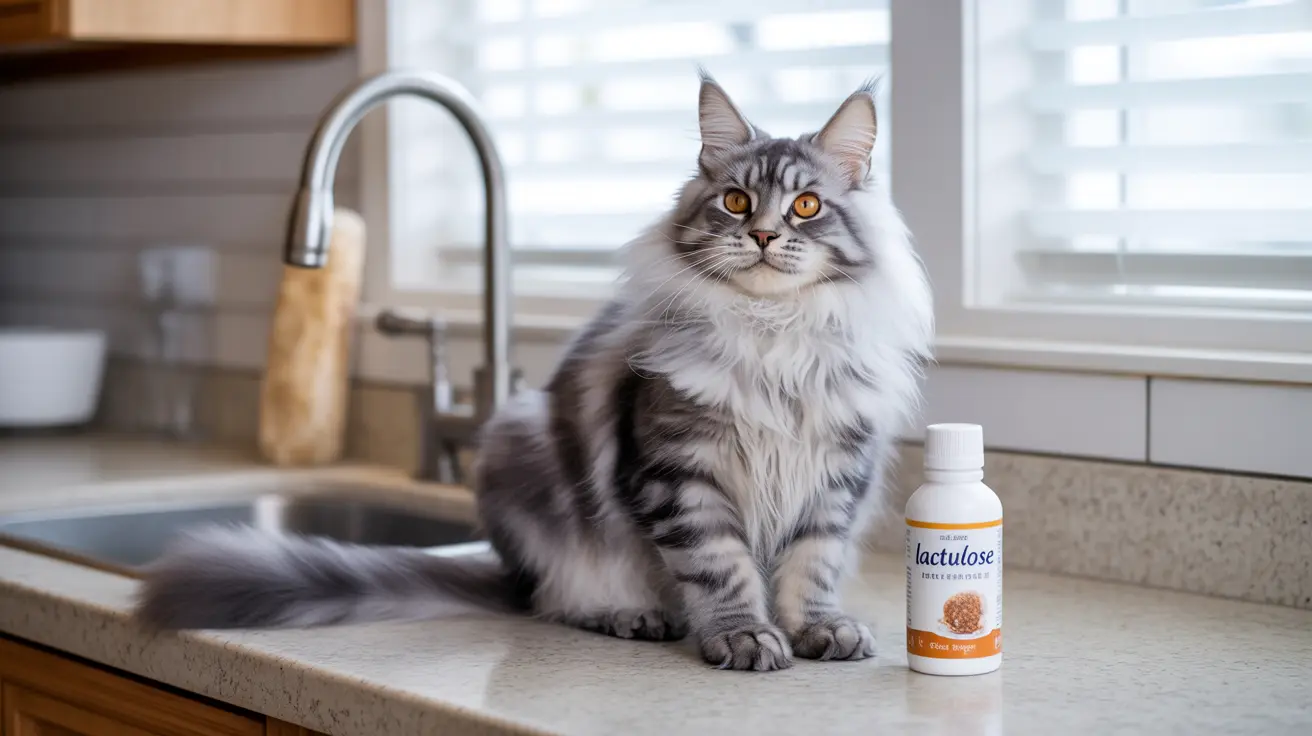How Lactulose Works in Cats
Lactulose functions primarily by drawing water into your cat's intestines, which helps soften the stool and promote bowel movements. This synthetic sugar isn't digested by your cat's body but instead passes through to the large intestine where beneficial bacteria break it down.
Additionally, lactulose creates an acidic environment in the colon, which makes it particularly useful for cats with liver problems, as it helps reduce blood ammonia levels that can cause hepatic encephalopathy.
Expected Timeline for Lactulose Effects
Most cats experience relief from constipation within 12-24 hours after receiving their first dose of lactulose. However, several factors can influence this timeline:
- Severity of constipation
- Individual cat's metabolism
- Proper dosing
- Concurrent treatments
- Overall health status
In some cases, particularly with severe constipation, it may take up to 2-3 days to see full therapeutic effects. If your cat hasn't shown improvement after 48 hours, contact your veterinarian.
Proper Dosing and Administration
The typical dosage for cats is approximately 1 ml per 10 pounds of body weight, given 2-3 times daily. However, your veterinarian will provide specific dosing instructions based on your cat's condition and needs.
Tips for Successful Administration
Many cats resist taking lactulose due to its sweet taste and syrupy texture. Here are some helpful strategies:
- Mix with wet food
- Use a oral syringe for direct administration
- Consider lactulose crystals as an alternative
- Offer water immediately after dosing
- Follow with a favorite treat as positive reinforcement
Monitoring Your Cat's Response
While using lactulose, watch for these positive signs:
- Regular bowel movements
- Softer stool consistency
- Improved appetite
- More comfortable behavior
- Reduced straining
Also monitor for potential side effects, which may include diarrhea, dehydration, or abdominal discomfort. If these occur, contact your veterinarian for dosage adjustment.
Supporting Treatment Success
To maximize lactulose's effectiveness:
- Ensure plenty of fresh water is available
- Maintain a consistent feeding schedule
- Consider adding fiber-rich foods to the diet
- Keep the litter box clean and accessible
- Monitor stool frequency and consistency
Frequently Asked Questions
How long does lactulose take to start working for constipation in cats?
Lactulose typically begins working within 12-24 hours after the first dose, though some cats may need up to 48 hours to show improvement.
What is the recommended lactulose dosage for cats with constipation or hepatic encephalopathy?
The standard dosage is 1 ml per 10 pounds of body weight, given 2-3 times daily. However, always follow your veterinarian's specific dosing instructions.
What are common side effects of lactulose treatment in cats and how can they be managed?
Common side effects include diarrhea, dehydration, and abdominal discomfort. These can be managed through proper dosing, ensuring adequate water intake, and veterinary monitoring.
How should lactulose be administered to cats if they resist the medication's taste?
Mix lactulose with wet food, use an oral syringe, or consider lactulose crystals as an alternative. Always follow administration with positive reinforcement.
When should I contact a veterinarian if my cat shows no improvement after taking lactulose?
Contact your veterinarian if your cat hasn't shown improvement within 48 hours of starting treatment, or if you notice any concerning side effects.
Remember, while lactulose is generally safe and effective, always consult with your veterinarian about any concerns during treatment. They can adjust the dosage or recommend alternative treatments if needed.






